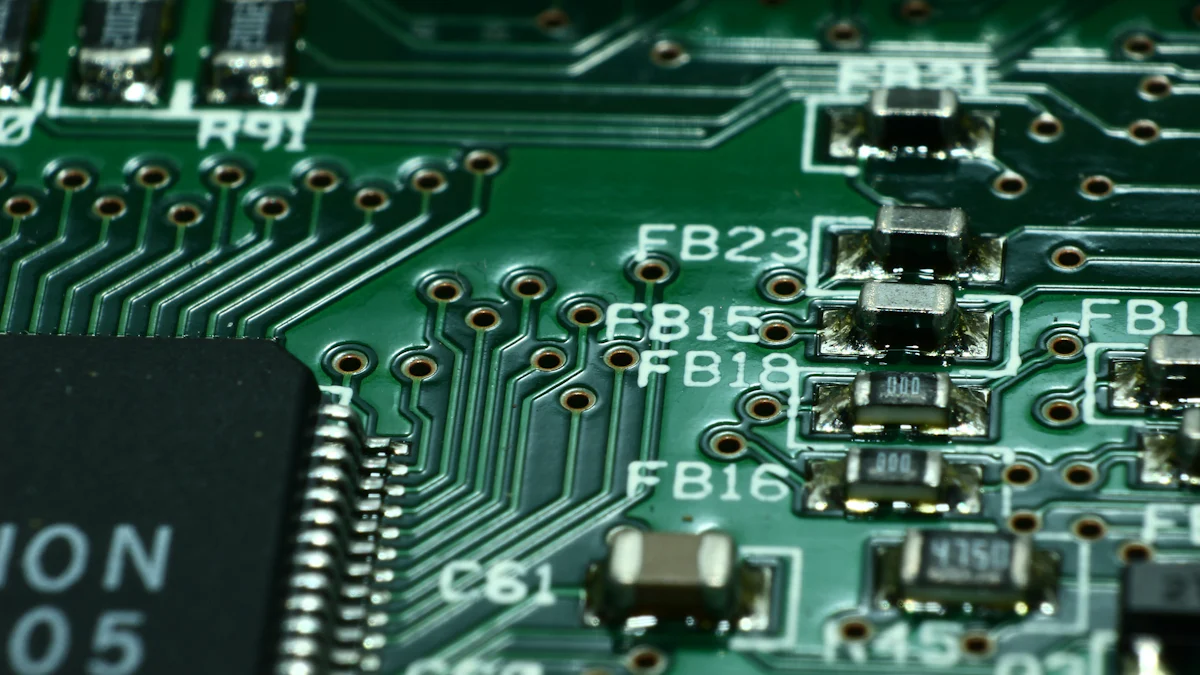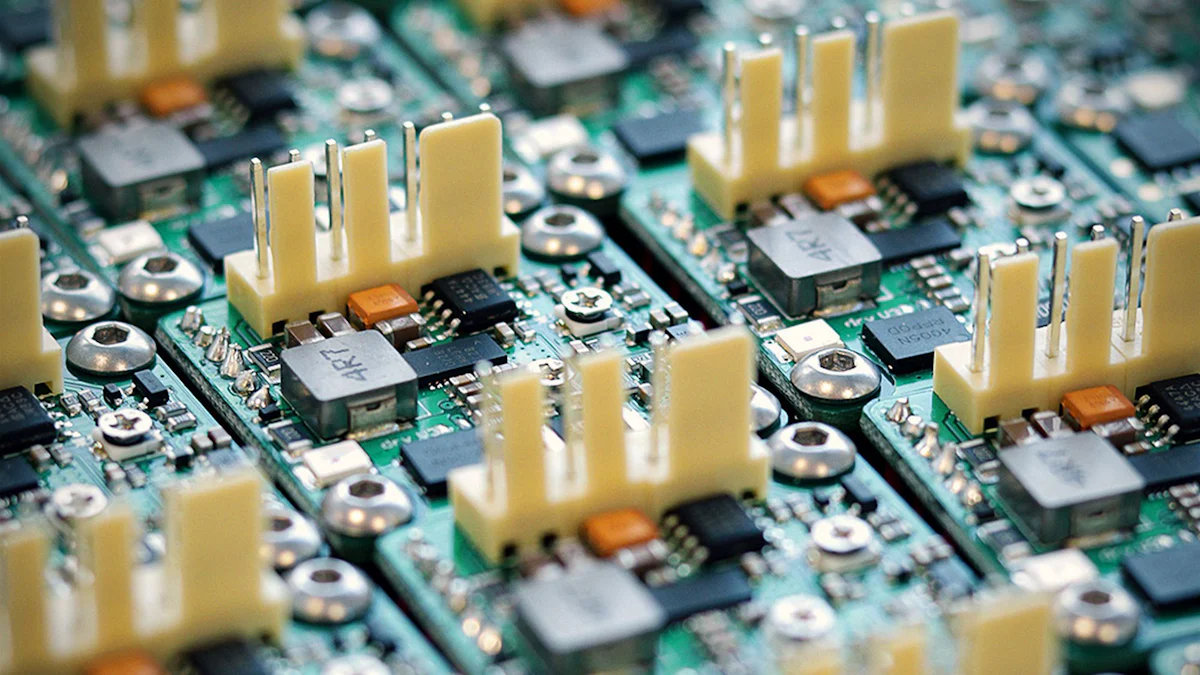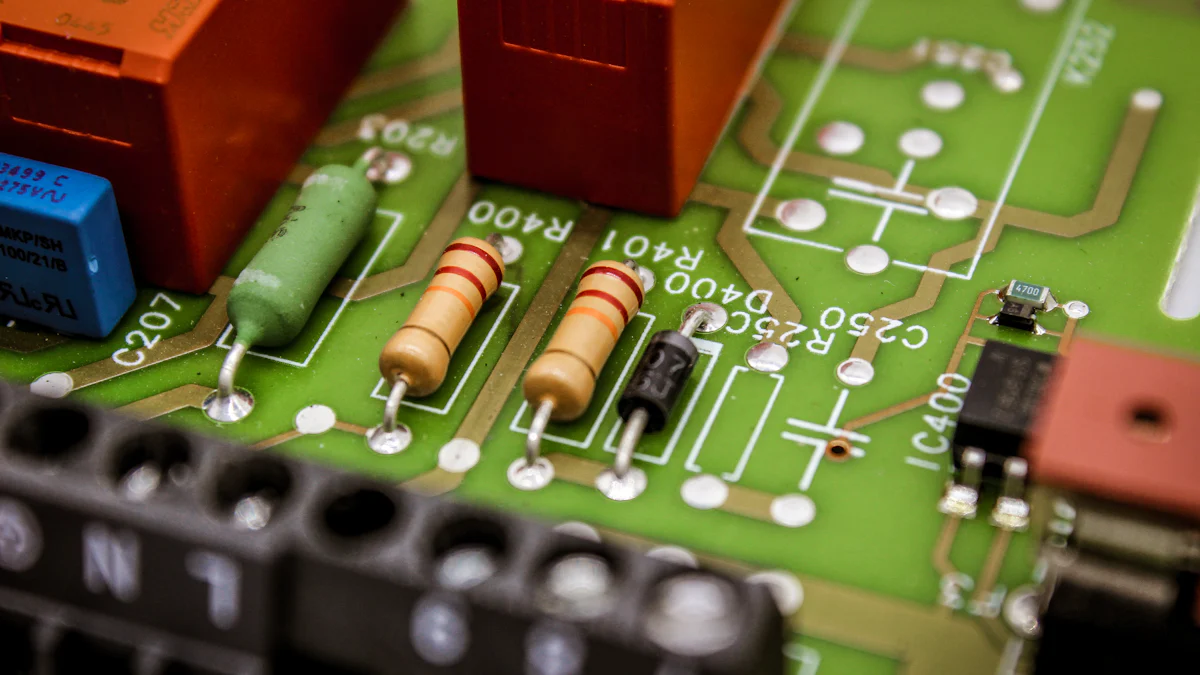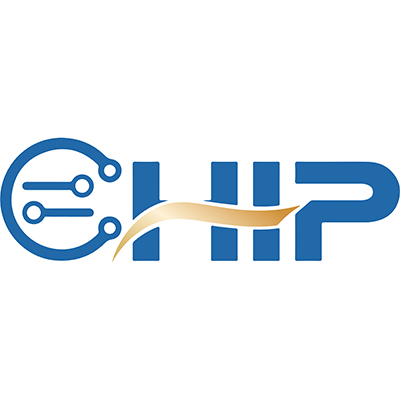What Are the Functions of Circuit Board Components in Electronics

Circuit boards are the backbone of modern electronic devices. They house various circuit board components that enable circuits to function effectively. Each of these circuit board components plays a unique role, from regulating power to processing signals. You interact with these printed circuit boards daily, whether in your smartphone, computer, or household appliances. Understanding how common electronic components like resistors, capacitors, and transistors work helps you troubleshoot and design better systems. These electrical components form the foundation of circuits, ensuring your devices operate smoothly and reliably.
Key Takeaways
Circuit boards are important for electronics. They connect parts to work together.
Resistors control how much current flows and protect parts from harm.
Capacitors hold and release energy. They keep voltage steady and reduce noise.
Inductors store energy using magnetism. They help with filtering and power supply.
Diodes let current flow one way. They stop damage from reverse voltage.
Transistors make signals stronger and act as switches. They are very important.
Integrated circuits put many parts into one chip. This saves space and adds functions.
Heat sinks, fans, and thermal paste keep circuit boards cool and working well.
Essential Passive Circuit Board Components

Passive components are the backbone of many circuits. These essential circuit board components do not require an external power source to operate. Instead, they rely on the flow of current through the circuit. Let’s explore three common electronic components in this category: resistors, capacitors, and inductors.
Resistors
Function: Limiting current and dividing voltage
Resistors are among the most common electronic components you’ll encounter on printed circuit boards. Their primary job is to limit the flow of electrical current and divide voltage within circuits. By doing so, they protect sensitive components from excessive current that could cause damage.
For example, in a PCB, a resistor might reduce the current flowing to an LED, ensuring it doesn’t burn out. Resistors come in various sizes and resistance values, which you can identify using the color bands on their surface. These bands represent the resistor’s resistance in ohms.
Importance: Prevents damage to other components by controlling current flow
Without resistors, circuits would lack control over current flow. This could lead to overheating or failure of other circuit board components. By adding resistors to your design, you ensure the stability and safety of your circuits.
Capacitors
Function: Storing and releasing electrical energy
Capacitors are another vital part of essential circuit board components. They store electrical energy temporarily and release it when needed. This ability makes them incredibly useful in circuits that require energy smoothing or filtering.
In a PCB, capacitors often work to stabilize voltage levels. For instance, they can filter out noise in power supplies, ensuring a steady flow of energy to other components. Capacitors come in different types, such as ceramic, electrolytic, and film, each suited for specific applications.
Importance: Used for filtering, energy storage, and signal smoothing
Capacitors play a key role in maintaining the performance of circuits. They help eliminate voltage spikes and smooth out fluctuations, which is especially important in sensitive electronic devices. Without capacitors, many circuits would experience instability or poor performance.
Inductors
Function: Storing energy in a magnetic field
Inductors are passive components that store energy in a magnetic field when current flows through them. They are often used in circuits that require filtering or energy transfer.
In a PCB, inductors are commonly found in power supplies. They work alongside capacitors to filter out unwanted signals or smooth voltage. Inductors are also used in applications like transformers and radio-frequency circuits.
Importance: Commonly used in power supplies and signal filtering
Inductors are essential for maintaining the integrity of signals in circuits. They help block high-frequency noise while allowing low-frequency signals to pass through. This makes them indispensable in communication systems and power management.
By understanding these passive components, you can design more efficient and reliable circuits. Resistors, capacitors, and inductors form the foundation of many electronic systems, ensuring stability and functionality in your devices.
Essential Active Circuit Board Components
Active components play a crucial role in the operation of printed circuit boards. Unlike passive components, active components require an external power source to function. These components control the flow of electricity and enable complex operations in circuits. Let’s explore three key active components: diodes, transistors, and integrated circuits.
Diodes
Function: Allowing current to flow in one direction
Diodes are essential for directing current flow in a single direction. They act as one-way gates, preventing current from flowing backward in a circuit. This property makes them invaluable in rectification, where alternating current (AC) is converted into direct current (DC).
For example, in a PCB, diodes protect sensitive electronic components by blocking reverse voltage. They also play a role in signal demodulation, extracting information from modulated signals in communication systems.
Importance: Used for rectification, signal demodulation, and protection
Diodes ensure the safety and efficiency of circuits. Without them, reverse currents could damage other circuit board components. Their ability to filter and protect makes them indispensable in power supplies and communication devices.
Transistors
Function: Amplifying or switching electrical signals
Transistors are among the most versatile components on circuit boards. They amplify weak electrical signals, making them stronger, or act as switches to control the flow of current. This dual functionality makes transistors the backbone of modern electronics.
In a PCB, transistors are used in everything from amplifiers to microprocessors. For instance, they can amplify audio signals in speakers or switch currents in digital circuits. Their small size and efficiency allow them to perform these tasks with minimal energy consumption.
Importance: Fundamental building blocks of modern electronics
Transistors revolutionized electronics by enabling compact and efficient designs. They replaced bulky vacuum tubes, paving the way for smaller and more powerful devices. Today, transistors are found in nearly every electronic device, from smartphones to computers.
Integrated Circuits (ICs)
Function: Combining multiple components into a single chip
Integrated circuits, or ICs, are compact chips that house multiple electronic components like transistors, diodes, and resistors. These components work together to perform complex tasks within a single package.
In a PCB, ICs handle functions such as data processing, memory storage, and signal amplification. For example, microcontrollers, a type of IC, control the operations of devices like washing machines and remote controls.
Importance: Enables complex operations in a compact form
ICs have transformed the way circuits are designed. By combining multiple components into a single chip, they save space and reduce manufacturing costs. This innovation allows you to enjoy powerful, compact devices like smartphones and laptops.
Active components like diodes, transistors, and integrated circuits are the driving force behind modern electronics. They enable the functionality and efficiency of PCBs, ensuring your devices perform reliably and effectively.
Electromechanical Circuit Board Components
Electromechanical components bridge the gap between electrical signals and mechanical actions. These circuit board components play a vital role in controlling and connecting various parts of a pcb. Let’s explore three key components in this category: switches, relays, and connectors.
Switches
Function: Manually or automatically controlling the flow of current
Switches are essential for managing the flow of electricity in circuits. They allow you to manually or automatically open and close a circuit, controlling whether current flows or stops. For example, a light switch in your home interrupts the circuit to turn the light off and reconnects it to turn the light on.
In a pcb, switches come in various forms, such as toggle, push-button, and rotary switches. Each type serves a specific purpose, depending on the design of the circuit. Some switches are designed for user interaction, while others operate automatically based on conditions like temperature or pressure.
Importance: Used for turning circuits on and off
Switches provide a simple yet effective way to control circuits. Without them, you would struggle to manage the operation of electronic devices. They ensure you can safely and efficiently turn circuits on and off, making them indispensable in both simple and complex systems.
Relays
Function: Electrically operated switches
Relays take the concept of switches a step further. Instead of requiring manual operation, relays use electrical signals to open or close circuits. This makes them ideal for controlling high-power circuits with low-power signals.
In a pcb, relays are often used in applications like motor control, home automation, and industrial machinery. For instance, a relay might allow a small microcontroller to control a high-power motor without direct electrical contact.
Importance: Used for isolating and controlling high-power circuits
Relays protect sensitive electronic components by isolating them from high-power circuits. They also enable you to control large loads with minimal effort. This makes relays a critical component in systems that require both safety and efficiency.
Connectors
Function: Providing physical and electrical connections
Connectors ensure a reliable connection between different parts of a pcb. They allow you to join wires, cables, or other pcbs, facilitating the flow of signals and power. Connectors come in various types, such as pin headers, sockets, and terminal blocks, each designed for specific applications.
Importance: Ensures reliable communication between different parts of a circuit
Connectors play a crucial role in connection and distribution within circuits. They ensure that signals and power flow seamlessly between components, maintaining the functionality of the entire system. Without connectors, assembling and maintaining electronic devices would be far more challenging.
Electromechanical components like switches, relays, and connectors are essential for the operation of pcbs. They provide control, isolation, and connection, ensuring your circuits function as intended. By understanding these components, you can design and troubleshoot electronic systems with greater confidence.
Power Circuit Board Components
Power circuit board components ensure your pcb delivers the right amount of energy to its electronic components. These components manage power flow, regulate voltage, and adapt energy levels to meet the needs of your circuits. Let’s explore three key components: batteries, voltage regulators, and transformers.
Batteries
Function: Providing a portable power source
Batteries store energy and supply it to your pcb when needed. They act as a portable power source, allowing your circuits to function without being connected to a fixed power outlet. Batteries come in various types, such as alkaline, lithium-ion, and nickel-metal hydride, each suited for specific applications.
For example, in a remote control, the battery powers the pcb, enabling the device to send signals to your television. Without batteries, mobile and portable devices would not exist.
Importance: Essential for mobile and remote devices
Batteries are crucial for devices that need to operate in remote or mobile environments. They provide the energy required to keep your circuits running, whether in a smartphone, flashlight, or wearable device. Their portability and reliability make them indispensable in modern electronics.
Voltage Regulators
Function: Maintaining a stable output voltage
Voltage regulators ensure your pcb receives a consistent voltage level. They take an unstable input voltage and adjust it to a steady output, protecting your circuits from fluctuations. This stability is vital for sensitive electronic components that require precise voltage to operate correctly.
For instance, in a laptop, the voltage regulator ensures the processor and memory receive the exact voltage they need. Without this component, your pcb could experience erratic behavior or even permanent damage.
Importance: Protects components from voltage fluctuations
Voltage regulators safeguard your circuits by preventing overvoltage or undervoltage conditions. They enhance the reliability and lifespan of your pcb by ensuring each component operates within its safe voltage range. This makes them a critical part of any power management system.
Transformers
Function: Changing voltage levels
Transformers adjust voltage levels to meet the requirements of your circuits. They either step up (increase) or step down (decrease) voltage, depending on the needs of your pcb. Transformers achieve this by transferring energy between two coils of wire through a magnetic field.
In a power supply, transformers reduce high-voltage electricity from the grid to a lower voltage suitable for your pcb. They also isolate circuits to prevent electrical interference or damage.
Importance: Used in power supplies and signal isolation
Transformers play a vital role in adapting energy for your pcb. They ensure your circuits receive the correct voltage while protecting them from external electrical disturbances. This makes transformers essential for both safety and functionality in electronic systems.
Power circuit board components like batteries, voltage regulators, and transformers are fundamental to the operation of your pcb. They ensure your circuits receive the right amount of energy, protecting and powering your electronic components effectively.
Signal Processing Circuit Board Components
Signal processing components play a critical role in ensuring your pcb handles signals accurately and efficiently. These components generate, control, and refine signals, enabling your circuits to perform tasks like timing, communication, and filtering. Let’s explore three essential signal processing circuit board components: oscillators, crystals, and filters.
Oscillators
Function: Generating periodic signals
Oscillators produce periodic signals, such as sine waves or square waves, which are essential for timing and synchronization in circuits. These signals act as a clock, ensuring different parts of your pcb work in harmony. For example, an oscillator in a microcontroller generates the clock signal that coordinates its operations.
Oscillators come in various types, including RC oscillators, LC oscillators, and crystal oscillators. Each type serves specific applications, depending on the required frequency and stability.
Importance: Used in clocks, timers, and communication systems
You’ll find oscillators in devices like watches, computers, and radios. They provide the precise timing needed for tasks like counting seconds, transmitting data, or maintaining synchronization in communication systems. Without oscillators, your circuits would lack the timing necessary for reliable operation.
Crystals
Function: Providing precise frequency control
Crystals, often made from quartz, ensure your pcb maintains accurate frequency control. When connected to an oscillator circuit, a crystal vibrates at a specific frequency, stabilizing the oscillator’s output. This precision makes crystals indispensable in applications requiring exact timing.
For instance, in a digital clock, the crystal ensures the time displayed remains accurate. Similarly, in communication devices, crystals maintain the correct frequency for transmitting and receiving signals.
Importance: Ensures accurate timing in circuits
Crystals are vital for circuits that demand high precision. They prevent timing errors that could disrupt the operation of your pcb. Whether in a GPS device or a smartphone, crystals ensure your electronic components function with accuracy and reliability.
Filters
Function: Removing unwanted frequencies
Filters refine signals by removing unwanted frequencies, such as noise or interference. They allow only the desired frequencies to pass through, ensuring your circuits process clean and accurate signals. Filters are classified into low-pass, high-pass, band-pass, and band-stop types, each designed for specific tasks.
In a pcb, filters are commonly used in audio systems to eliminate background noise or in communication systems to isolate specific frequency bands. For example, a low-pass filter in a speaker circuit removes high-frequency noise, improving sound quality.
Importance: Improves signal quality in communication systems
Filters enhance the performance of circuits by ensuring only relevant signals are processed. This is especially important in communication systems, where clear and accurate signal transmission is critical. Without filters, your pcb would struggle to deliver high-quality performance in noisy environments.
Signal processing components like oscillators, crystals, and filters are essential for the functionality of your pcb. They ensure your circuits handle signals with precision, enabling reliable operation in a wide range of applications.
Heat Management Circuit Board Components

Heat management is critical for ensuring your pcb operates efficiently and reliably. Excessive heat can damage electronic components and reduce the lifespan of your circuits. To prevent this, you can use heat management solutions like heat sinks, fans, and thermal paste. These components work together to regulate temperature and protect your pcb from overheating.
Heat Sinks
Function: Dissipating heat from components
Heat sinks are designed to draw heat away from electronic components and release it into the surrounding air. They are typically made of materials like aluminum or copper, which conduct heat efficiently. When you attach a heat sink to a component like a processor or voltage regulator, it absorbs the heat generated during operation and spreads it across its surface area. This process allows the heat to dissipate more effectively.
Importance: Prevents overheating and ensures reliability
By using heat sinks, you can prevent your circuits from overheating. Overheating can cause components to fail or malfunction, leading to costly repairs or replacements. Heat sinks ensure your pcb remains stable and reliable, even under heavy workloads. They are essential for high-performance systems like computers, gaming consoles, and industrial equipment.
Fans
Function: Actively cooling components
Fans provide active cooling by moving air across the surface of your pcb. This airflow helps remove heat from components and prevents it from building up inside the device. Fans are often used in combination with heat sinks to enhance cooling efficiency. For example, a fan mounted on a heat sink can increase the rate of heat dissipation by improving air circulation.
Importance: Used in high-power systems to maintain temperature
Fans are crucial for systems that generate significant amounts of heat, such as servers, power supplies, and high-performance graphics cards. Without proper cooling, these systems could overheat and shut down. By incorporating fans into your design, you can maintain a safe operating temperature and ensure the longevity of your circuits.
Thermal Paste
Function: Improving heat transfer between components and heat sinks
Thermal paste, also known as thermal compound, fills the microscopic gaps between a component and its heat sink. These gaps can trap air, which is a poor conductor of heat. By applying thermal paste, you create a more efficient thermal connection, allowing heat to transfer more effectively from the component to the heat sink.
Importance: Enhances cooling efficiency
Thermal paste plays a vital role in maximizing the performance of your heat sinks. Without it, the heat transfer process would be less efficient, leading to higher temperatures and reduced reliability. By using thermal paste, you can ensure your pcb stays cool and operates at peak performance.
Effective heat management is essential for protecting your pcb and its circuits. Heat sinks, fans, and thermal paste work together to keep your electronic components cool and functional. By understanding and implementing these solutions, you can design more reliable and efficient systems.
Troubleshooting and Identifying Circuit Board Components
When working with a pcb, you may encounter challenges that require identifying circuit board components and diagnosing problems. Understanding how to recognize components and address common issues with circuit board components will help you maintain and repair your circuits effectively.
Identifying Components
Using labels, colors, and markings to recognize components
Each component on a pcb has unique identifiers that make it easier to recognize. Manufacturers often label components with alphanumeric codes, symbols, or color bands. For example, resistors use colored bands to indicate their resistance value, while capacitors may have numerical markings for capacitance. Integrated circuits often have part numbers printed on their surface.
Pay close attention to the layout of the pcb. Components are usually grouped based on their function, making it easier to identify them. By familiarizing yourself with these markings, you can quickly locate and understand the role of each component in your circuits.
Tools for identification: Multimeters, component testers
Sometimes, visual inspection isn’t enough to identify a component or verify its functionality. Tools like multimeters and component testers can help. A multimeter measures voltage, resistance, and current, allowing you to test components like resistors and capacitors. Component testers provide detailed information about electronic components, such as transistors or diodes, by analyzing their behavior.
Using these tools ensures accuracy when identifying circuit board components, especially in complex pcbs with densely packed circuits.
Common Issues
Overheating, short circuits, and component failure
Common issues with circuit board components include overheating, short circuits, and physical damage. Overheating often occurs when components like transistors or voltage regulators operate beyond their thermal limits. Short circuits happen when unintended connections allow current to flow where it shouldn’t, potentially damaging the pcb. Component failure can result from aging, manufacturing defects, or exposure to environmental factors like moisture.
Symptoms and signs of malfunction
You can spot problems by observing symptoms like burnt smells, discolored components, or bulging capacitors. A pcb with a short circuit may show no power or erratic behavior. Faulty components might cause circuits to stop functioning or produce inconsistent results. Recognizing these signs helps you pinpoint the source of the issue.
Troubleshooting Steps
Visual inspection for damage
Start by visually inspecting the pcb for obvious signs of damage. Look for burnt marks, broken traces, or loose connections. Check for components that appear swollen, cracked, or discolored. A magnifying glass can help you examine small details more closely.
Testing components with appropriate tools
After the visual inspection, use tools like a multimeter to test individual components. Measure resistance, continuity, or voltage to confirm whether a component is functioning correctly. For more advanced testing, use a component tester to analyze transistors, diodes, or capacitors. Replace any faulty components to restore the functionality of your circuits.
By following these steps, you can effectively troubleshoot and repair your pcb. Identifying circuit board components and addressing common issues with circuit board components ensures your circuits remain reliable and efficient.
Circuit board components form the foundation of every electronic device. Each component contributes to the functionality of your pcb, whether by regulating power, processing signals, or managing heat. Understanding these components helps you design better circuits and troubleshoot issues effectively. By mastering the basics, you gain the confidence to work with pcbs in various applications. This knowledge not only improves your skills but also ensures your circuits operate reliably in any system.
FAQ
1. What is the purpose of a circuit board?
A circuit board connects and organizes electronic components to create functional circuits. It provides a stable platform for components and ensures proper electrical connections for power, signal processing, and communication.
2. How do I identify components on a circuit board?
Look for labels, symbols, or color codes printed on the board. Use tools like a multimeter or component tester to verify functionality. Familiarize yourself with common markings for resistors, capacitors, and ICs.
3. Why do circuit boards need heat management?
Heat management prevents components from overheating, which can cause malfunctions or permanent damage. Heat sinks, fans, and thermal paste help dissipate heat and maintain safe operating temperatures.
4. What is the difference between passive and active components?
Passive components, like resistors and capacitors, don’t need external power to function. Active components, like transistors and ICs, require an external power source to control current or amplify signals.
5. How do I troubleshoot a faulty circuit board?
Start with a visual inspection for damage, like burnt marks or swollen components. Use a multimeter to test for continuity, resistance, or voltage. Replace any damaged or malfunctioning components.
6. What tools are essential for working with circuit boards?
You’ll need a multimeter, soldering iron, component tester, and magnifying glass. These tools help you assemble, test, and repair circuit boards effectively.
7. Can I repair a damaged circuit board myself?
Yes, if you have basic knowledge of electronics and the right tools. Identify the faulty components, replace them, and test the board. For complex issues, consult a professional.
8. Why are integrated circuits important?
Integrated circuits combine multiple components into a single chip, saving space and enabling complex operations. They are essential for modern devices like smartphones, computers, and appliances.
Tip: Always handle circuit boards with care to avoid static damage. Use an anti-static wrist strap for added protection.
See Also
Exploring Various Capacitor Types and Their Unique Characteristics
Essential Differences Between CR1620 and CR2032 Batteries Explained
Your Comprehensive Resource for Choosing Car Relays Effectively
